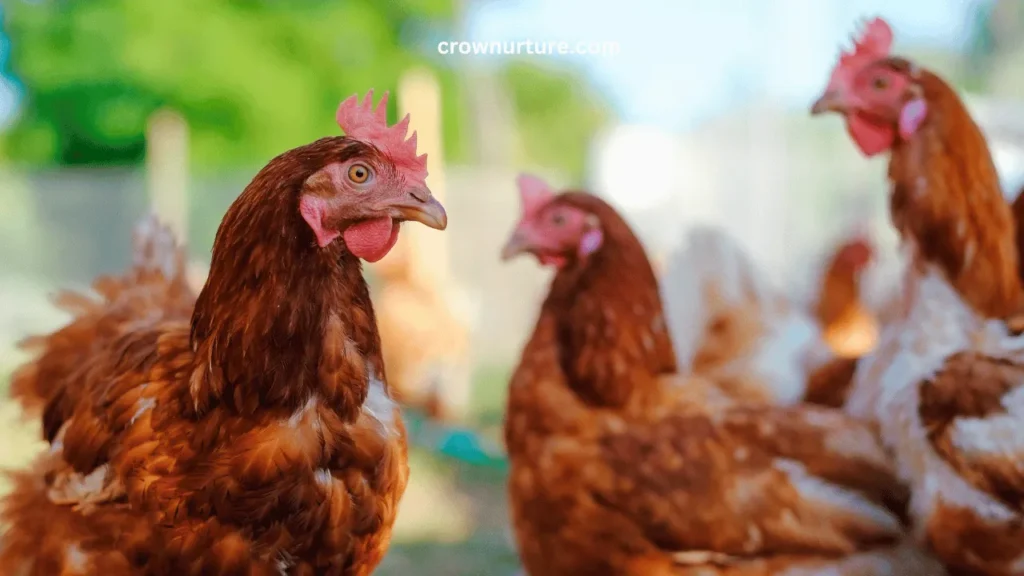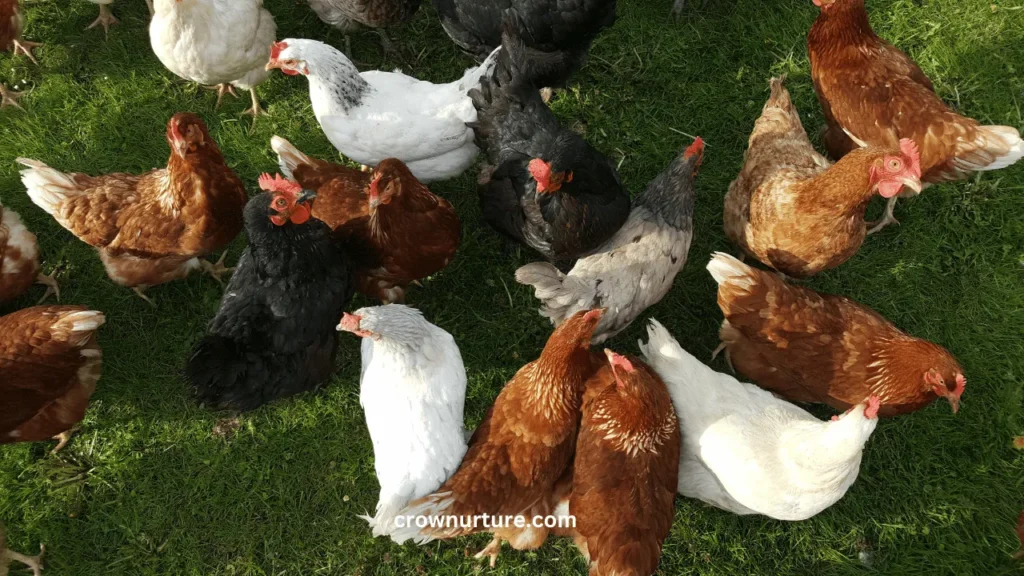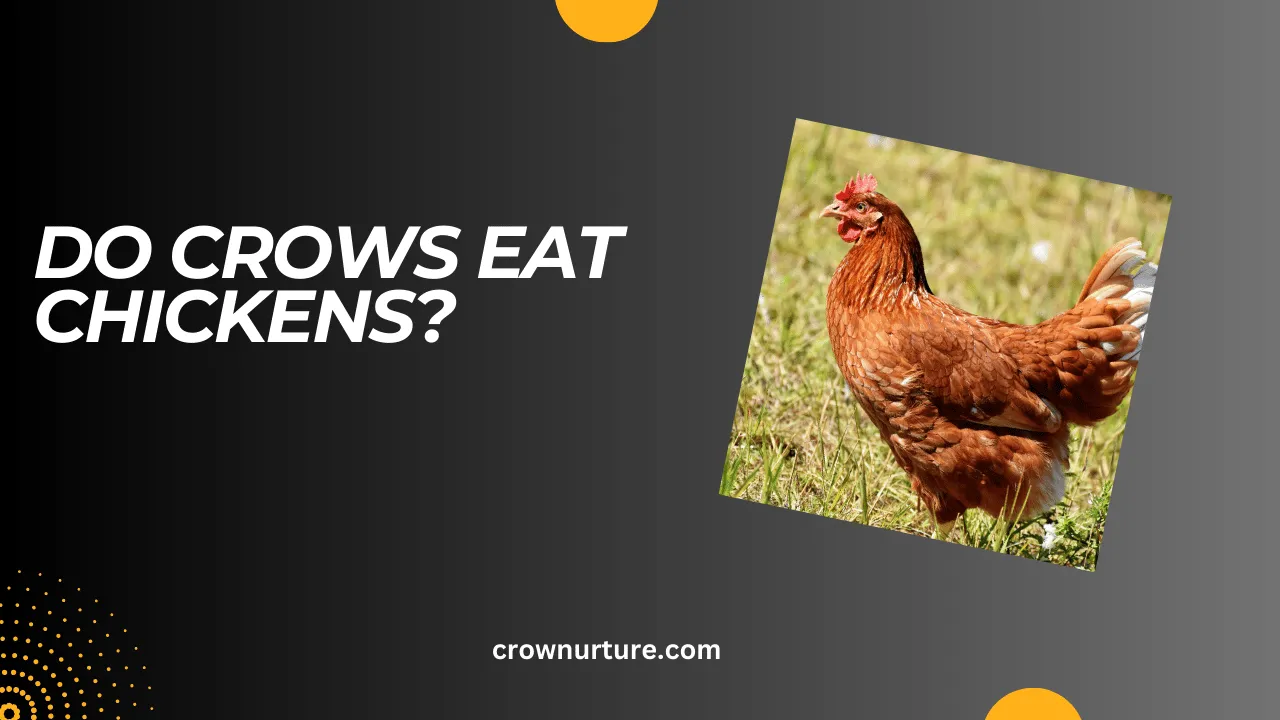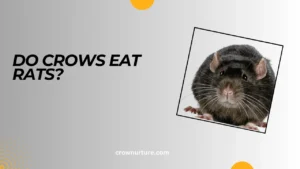Crows are often seen as intelligent, resourceful, and highly adaptable birds. These black-feathered creatures have a reputation for solving problems and using tools to find food.
But does this make them a threat to your backyard chickens? Can crows target your poultry, especially vulnerable young chicks? Understanding the relationship between crows and chickens is crucial for any poultry owner, as it could impact the safety of your flock.
This article will dive deep into the behavior of crows, exploring their diet, hunting strategies, and the factors that influence whether they might prey on chickens.
More importantly, it will address the risks and help you understand how to protect your chickens from potential threats, ensuring a safe and harmonious environment for your flock.
With the rise in urban farming and backyard poultry keeping, the question of crow predation is more relevant than ever. By understanding the intricacies of crow behavior, we can take proactive steps to secure our chickens and reduce the likelihood of such encounters.

Contents
- 1 1. Crow Diet and Foraging Behavior
- 2 2. Chicken Vulnerability
- 3 3. Factors Influencing Predation
- 4 4. Preventive Measures
- 5 5. The Role of Human Intervention
- 6 Conclusion
- 7 FAQs
- 7.1 1. Are crows a significant threat to chicken populations?
- 7.2 2. How can I protect my chickens from crows?
- 7.3 3. Do crows only eat chickens?
- 7.4 4. Can I scare crows away from my property?
- 7.5 5. How can I attract beneficial birds to my yard to help control pests?
- 7.6 6. Can crows be dangerous to other birds besides chickens?
1. Crow Diet and Foraging Behavior
Crows are known for their omnivorous diet, meaning they consume both plant matter and animal-based foods. This adaptability allows them to thrive in various habitats, from forests to urban areas.
- Opportunistic Feeding: Crows are opportunistic feeders, meaning they’ll take advantage of whatever food is available. Whether it’s insects, small rodents, or even the occasional baby bird, crows will go after an easy meal if the opportunity presents itself.
- Food Preferences: While crows prefer high-calorie foods, baby birds are particularly attractive to them due to their rich protein content. If crows encounter a vulnerable chick or an unguarded nest, they may see it as an easy meal.
- Diet Diversity: Despite the occasional predation on small animals or birds, crows generally have a diverse range of food sources, including fruits, grains, and human leftovers, which may reduce their need to target chickens regularly.
2. Chicken Vulnerability
Chickens, especially young chicks, are naturally vulnerable to predators, including crows. Understanding the various factors that contribute to their vulnerability can help poultry owners minimize the risk of predation.
- Chick Vulnerability: Chicks are small, helpless, and often unable to defend themselves from predators. Their size and lack of mobility make them particularly attractive targets for opportunistic predators like crows.
- Free-Range Chickens: Free-range chickens are at a greater risk because they roam outside and are not always protected by secure enclosures. This exposes them to potential dangers from crows and other predators.
- Parental Defense: While hens are typically protective of their chicks, their defensive behavior might not be enough to fend off a crow. Some hens will attempt to lead predators away or physically protect their young, but crows can be quite persistent.

3. Factors Influencing Predation
Several factors can increase the likelihood of crows preying on chickens, including food availability, environmental conditions, and the interaction between crow and chicken populations.
- Food Availability: Scarcity of food can drive crows to take more risks, such as preying on young birds. In times of drought or when natural food sources are scarce, crows are more likely to look for alternative food sources, including chicks.
- Habitat Quality: The quality of both crow and chicken habitats plays a significant role in shaping predator-prey interactions. Crow populations in urban areas may encounter chickens more frequently, leading to increased predation incidents.
- Population Dynamics: In areas where both crow and chicken populations are high, the competition for resources can result in increased predation. Fluctuations in either species’ numbers can directly impact the rate of predation.
4. Preventive Measures
While crows can pose a threat to chickens, there are several preventive measures that poultry owners can take to protect their flocks from crow predation.
- Secure Coops: The most effective way to prevent crow predation is to build a secure coop. Ensure that your coop is sturdy, with reinforced wire mesh that crows cannot easily penetrate. Proper ventilation and secure entrances are essential for keeping crows and other predators out.
- Predator Deterrents: Crows can be deterred using visual and auditory deterrents. Scarecrows, reflective tape, and even loud noises can help make the area less appealing to crows. However, these methods may need to be rotated to prevent crows from becoming accustomed to them.
- Netting: Installing netting over outdoor enclosures can protect free-range chickens from aerial predators, including crows. The netting can prevent crows from swooping down and attacking chicks while also protecting against other birds of prey.
- Guard Animals: Some poultry owners choose to use guard animals, such as dogs or even donkeys, to deter predators. These animals can help protect chickens by keeping other predators, including crows, at bay.
5. The Role of Human Intervention
Human activities and behavior can influence crow predation on chickens. From habitat modification to feeding practices, understanding the role of human actions is essential in reducing the risk to poultry.
- Habitat Modification: Urban development and agricultural practices can increase the likelihood of crows coming into contact with chickens. As human habitats expand, so does the range of predators like crows, putting poultry at greater risk.
- Feeding Practices: Poor feeding practices, such as leaving food scraps outside, can attract crows and other wildlife. To minimize attracting unwanted visitors, make sure to keep feed secure and clean up leftover food promptly.
- Conservation Efforts: Balancing human needs with wildlife conservation is crucial for the protection of both crows and chickens. Thoughtful conservation efforts can help maintain the delicate balance between predator and prey without causing harm to either species.
Conclusion
Crows can be a threat to chickens, particularly vulnerable chicks, but with proper precautions, this risk can be minimized. By understanding crow behavior and taking the necessary steps to secure your chickens, you can protect them from potential predation.
Whether it’s building sturdy coops, using deterrents, or ensuring your chickens are well-protected, there are many ways to safeguard your flock. The key to a peaceful coexistence with crows lies in proactive measures and understanding the nature of these intelligent birds.
FAQs
1. Are crows a significant threat to chicken populations?
While crows can prey on young chicks, their impact on overall chicken populations is typically minimal.
2. How can I protect my chickens from crows?
You can protect your chickens by securing coops, using predator deterrents, and providing protection for young chicks.
3. Do crows only eat chickens?
No, crows are omnivorous and will eat a variety of foods, including insects, fruits, seeds, and small animals.
4. Can I scare crows away from my property?
Yes, you can use scarecrows, reflective tape, and loud noises to make your property less attractive to crows.
5. How can I attract beneficial birds to my yard to help control pests?
You can attract beneficial birds like bluebirds and chickadees by providing bird feeders, bird baths, and nesting boxes.
6. Can crows be dangerous to other birds besides chickens?
Yes, crows may prey on other small birds and baby birds if they are vulnerable.








